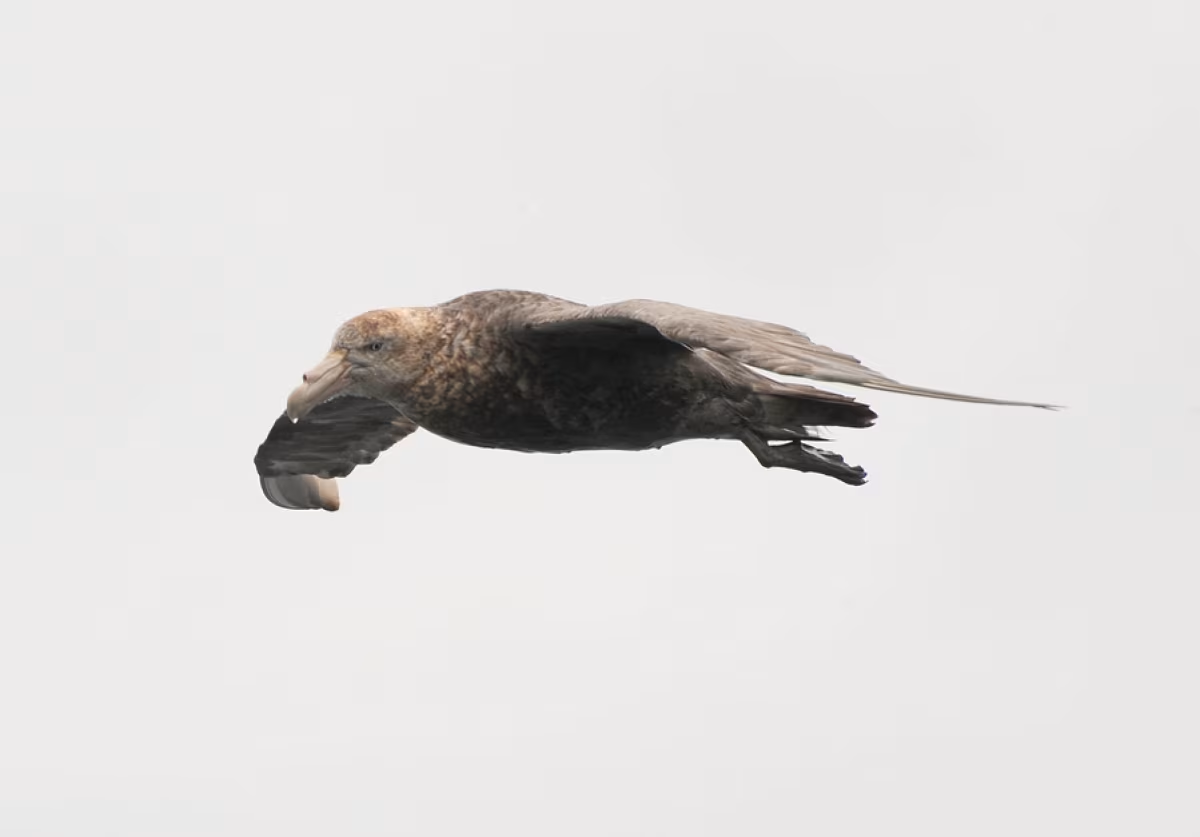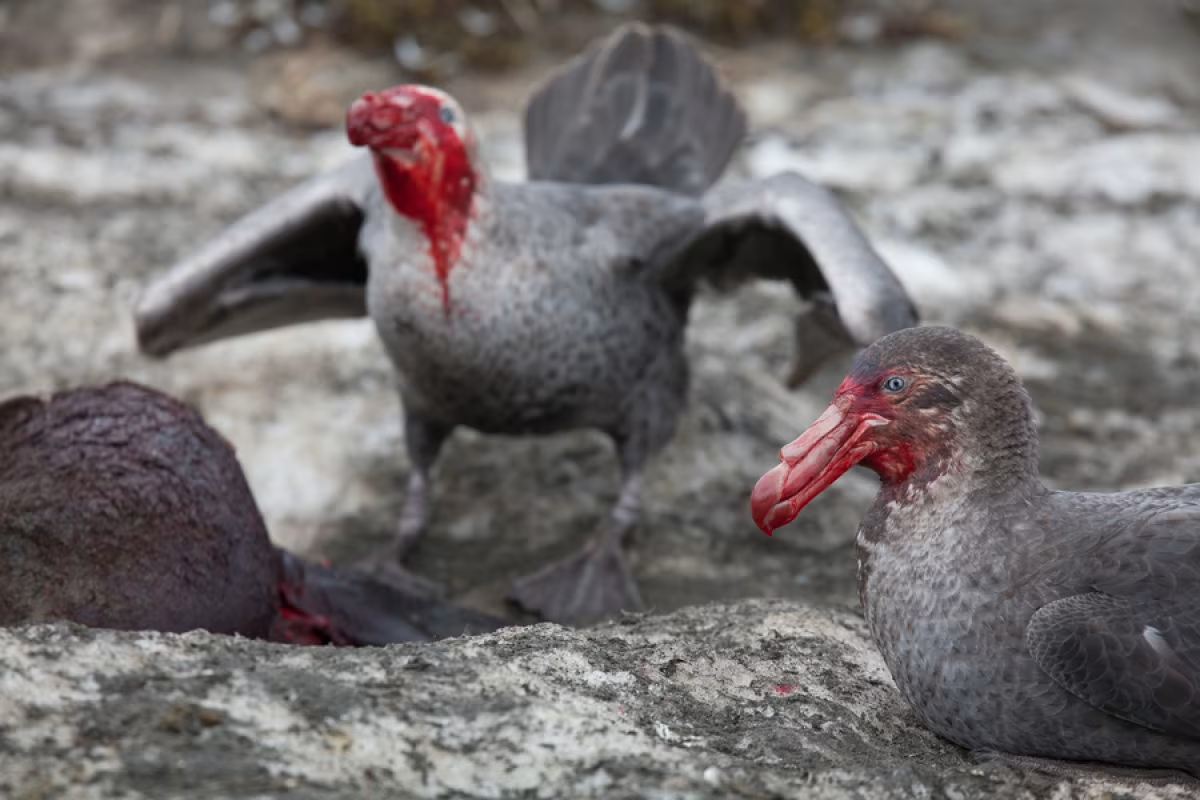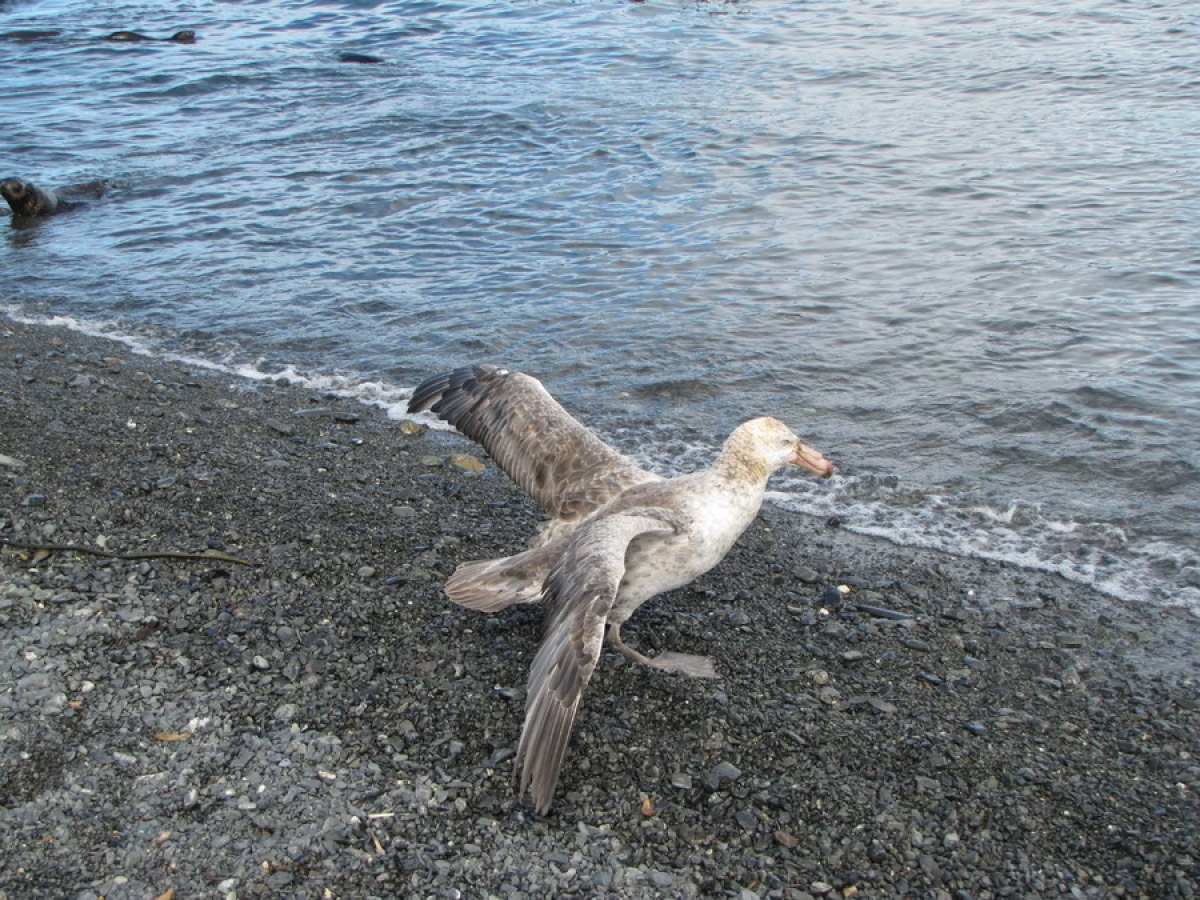The giant petrels of King George Island
Antarctica is inarguably one of the world’s greatest birding hotspots.
Nowhere else can you find penguins, storm petrels, skuas, and kelp gulls within the same binocular glance. Whatever your degree of birding interest or experience, it’s always inspirational to see these creatures in their natural habitat.
But there’s one avian species that stands a little taller than the others.
The giant petrel can be seen lumbering around the beaches of King George Island as if it has just learned to walk, though it is more often seen cruising the air on its expansive wingspan of 180 to 210 cm (71 to 83 inches).
With its piercing grey eyes and tube-nosed beak, the giant petrel of King George Island is an impressive sight to behold however you see it.

Image by Siegfried Woldhek
King George Island’s tubenose seabirds
Sometimes referred to as “stinkers” due to the fact that these scavengers will eat anything dead, dying, or weak, giant petrels are the largest birds in the Southern Hemisphere.
Currently, there are two recognized species of giant petrels: northern giant petrels and southern giant petrels. The two species are virtually indistinguishable, though several different color variations, or “morphs,” are recognized within them.
These morphs can range from white to a dark grey.
Due to the fact that giant petrels spend most of their lives at sea, they have adapted an evolutionary accommodations: On their beaks are tube-shaped nostrils that can filter salt out of seawater, allowing these birds to obtain fresh water.
From this adaption came the term “tubenoses.” Other tubenoses include shearwaters, fulmars, albatrosses, storm petrels, and diving petrels.

Image by Troels Jacobsen
Giant petrel breeding rituals
Giant petrels are solitary creatures. They spend months alone, feeding out at sea. But when the austral summer arrives in October, it’s time for giant petrels to migrate to the circumpolar regions of Antarctica to breed.
Because giant petrels love their privacy, they nest several hundred meters away from one another in colonies that have been used for generations.
Constructing a nest is the easiest part of this process and usually only requires moving a few stones around. Several weeks after establishing a nesting space, the eggs begin to arrive. These eggs can be around 20 cm (8 inches) in diameter, easily mistaken for a dinosaur egg.
Giant petrels only lay one egg per year, making it important for the parents to remain as vigilant as possible over their vulnerable young.
Still, giant petrel parents are sensitive to disturbance, abandoning their egg if they sense danger. Evolution has taught them that their own survival is more important than their unhatched egg, as they can always nest again next year.

Working with giant petrels on King George Island
The austral summer (October to March) provides mild enough conditions for scientists to study giant petrels on King George Island.
At the beginning of the breeding season, scientists monitor giant petrels at a safe distance through binoculars and high-powered spotting scopes. A census of their colonies is then taken, mapped, and compared to historical records.
Occasionally, a giant petrel colony will overlap with a penguin colony, making disturbance from penguins (and visiting humans) a difficult matter.
When this happens, it’s imperative that scientists approach the giant petrel colony slowly and avoid close contact. Giant petrels may emit a low “uuuurrr” sound if they feel threatened.

Giant petrel chicks
When giant petrel babies begin to poke their tiny tubenoses out of their eggs, it’s time for the parents to begin feeding.
Feeding is an around-the-clock task that requires a lot of time catching fish at sea, looking for dead seals along the beaches, and searching penguin colonies for unattended eggs or chicks. Giant petrel chicks get some of the best dining in Antarctica.
When disturbed, giant petrel chicks have a line of defense known as “gakking.”
Gakking is the sound giant petrels make as they projectile vomit at predators (or unwitting scientists). The fluid they project is composed of digestive fluid and the remains of food, so the smell it releases is not favorable.
For conservation purposes, however, scientists must continue to study giant petrel chicks. Researchers fit the young with a metal band around their leg, and a number on the band corresponds to the year they were banded.
Every year when the scientists return to collect data, they try to read these band codes and determine which giant petrels have returned to breed.

The conservation of giant petrels
From 1997 to1998, thousands of giant petrels were killed in illegal longline fishing operations in the Southern Ocean.
The long lines were meant for Patagonian toothfish, but instead they caught upward of 4,000 giant petrels and countless other sea birds and marine mammals. This method of fishing has since been regulated, resulting in the regeneration of the giant petrel population.
Although giant petrels are now in little danger of extinction, an increase in marine plastics and other trash pose a constant threat to their populations.

Image by Katja Riedel
King George Island (and other places to see giant petrels)
King George Island is an Antarctic island and the largest in the Shetland chain, situated perfectly within the breeding range of giant petels.
This makes King George Island one of the most consistent places to see these birds, though it is far from the only one: Giant petrels are commonly seen in most coastal areas of Antarctica and the sub-Antarctic islands. They are also plentiful in the Drake Passage.
So if you’re heading south for a thrilling Antarctica cruise, keep your binoculars close!

Image by Martin van Lokven
Title image by Thomas Laumeyer






